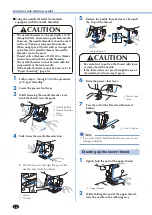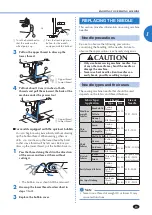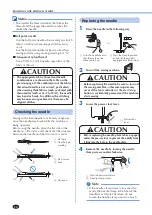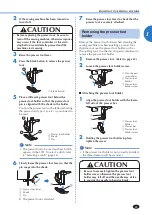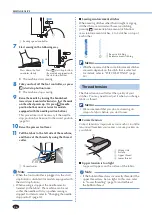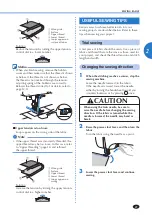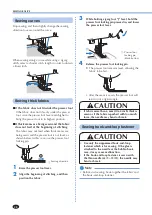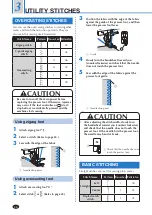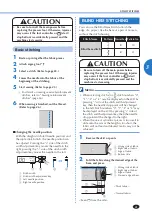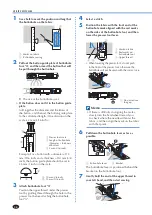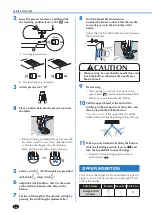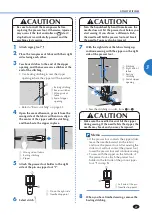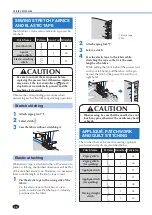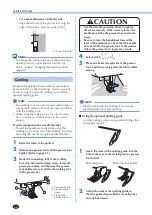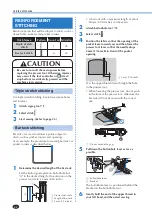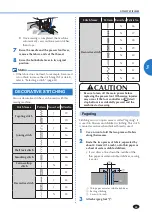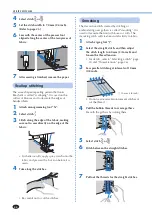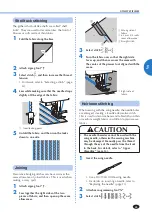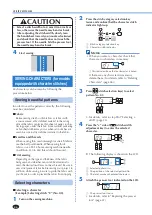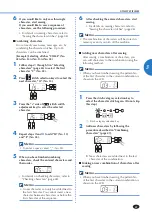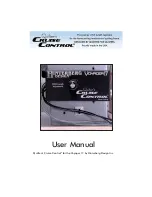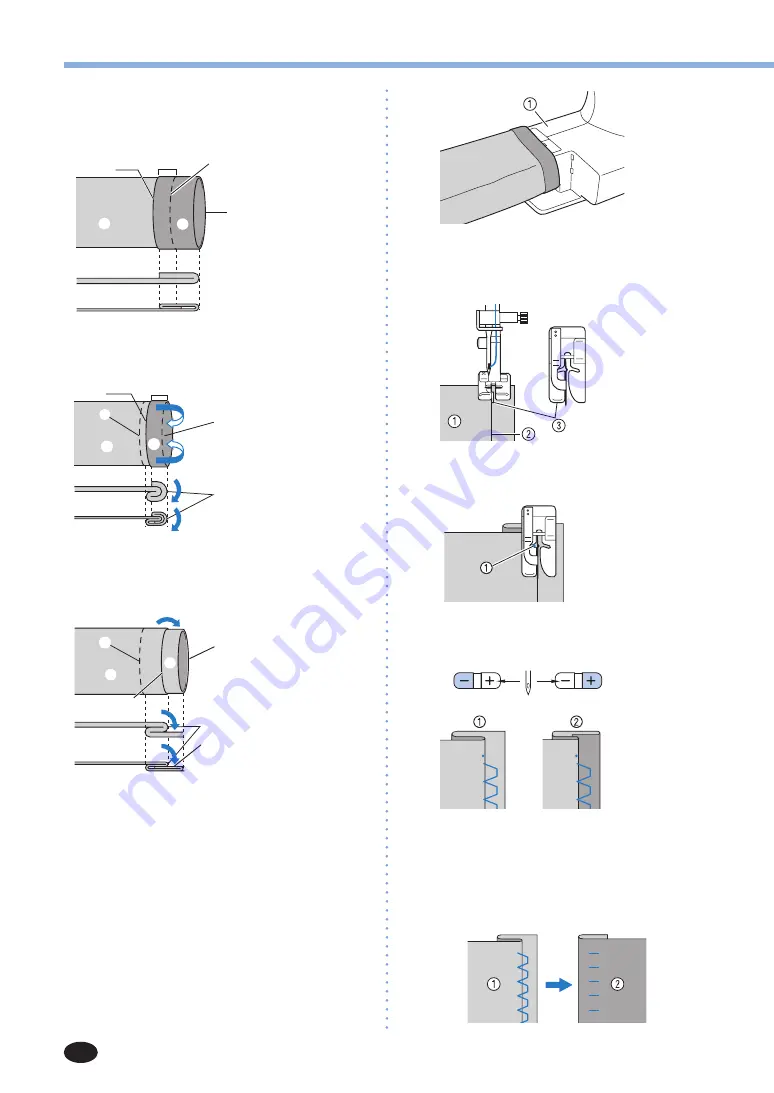
UTILITY STITCHES
32
3
Use a chalk to mark on the fabric about 5
mm (3/16 inch) from the edge of the fabric,
and then baste it.
1
2
1
2
3
5
6
4
1
2
1
Wrong side of fabric
2
Right side of fabric
3
Edge of fabric
4
Desired edge of
hem
5
5 mm (3/16 inch)
6
Basting
<Thick fabric>
<Normal fabric>
<Seen from the side>
4
Fold back the fabric inside along the basting.
1
3
6
5
1
1
2
7
4
1
Wrong side of fabric
2
Right side of fabric
3
Edge of fabric
4
Desired edge of hem
5
5 mm (3/16 inch)
6
Basting
7
Basting point
<Thick fabric>
<Normal fabric>
<Seen from the side>
5
Unfold the edge of fabric, and position the
fabric with the wrong side facing up.
5
1
1
1
1
1
2
6
3
4
1
Wrong side of fabric
2
Right side of fabric
3
Edge of fabric
4
Desired edge of
hem
5
Basting point
6
Basting
<Thick fabric>
<Normal fabric>
<Seen from the side>
6
Attach blind hem foot “R”.
7
Select a stitch.
8
Remove the flat bed attachment and make
free-arm sewing possible.
• For details on free-arm sewing, refer to
“Stitching cylindrical pieces” (page 29).
9
Slide the part that you wish to sew onto
the arm, make sure that the fabric feeds
correctly, and then start sewing.
1
Arm
10
Position the fabric with the edge of the folded
hem against the guide of the presser foot, and
then lower the presser foot lever.
R
1
Wrong side of
fabric
2
Fold of hem
3
Guide
11
Adjust the stitch width until the needle
slightly catches the fold of the hem.
R
1
Needle drop point
When you change the needle drop point, raise
the needle, and then change the stitch width.
Stitch width
1
Thick fabric
2
Normal fabric
■
If the needle catches too much of the hem fold
If the needle catches too much of the hem
fold, adjust the stitch width so that the needle
slightly catches the fold by pressing the “+”
side of the stitch width adjustment key.
<Thick fabric>
Summary of Contents for 885-E33
Page 2: ......

